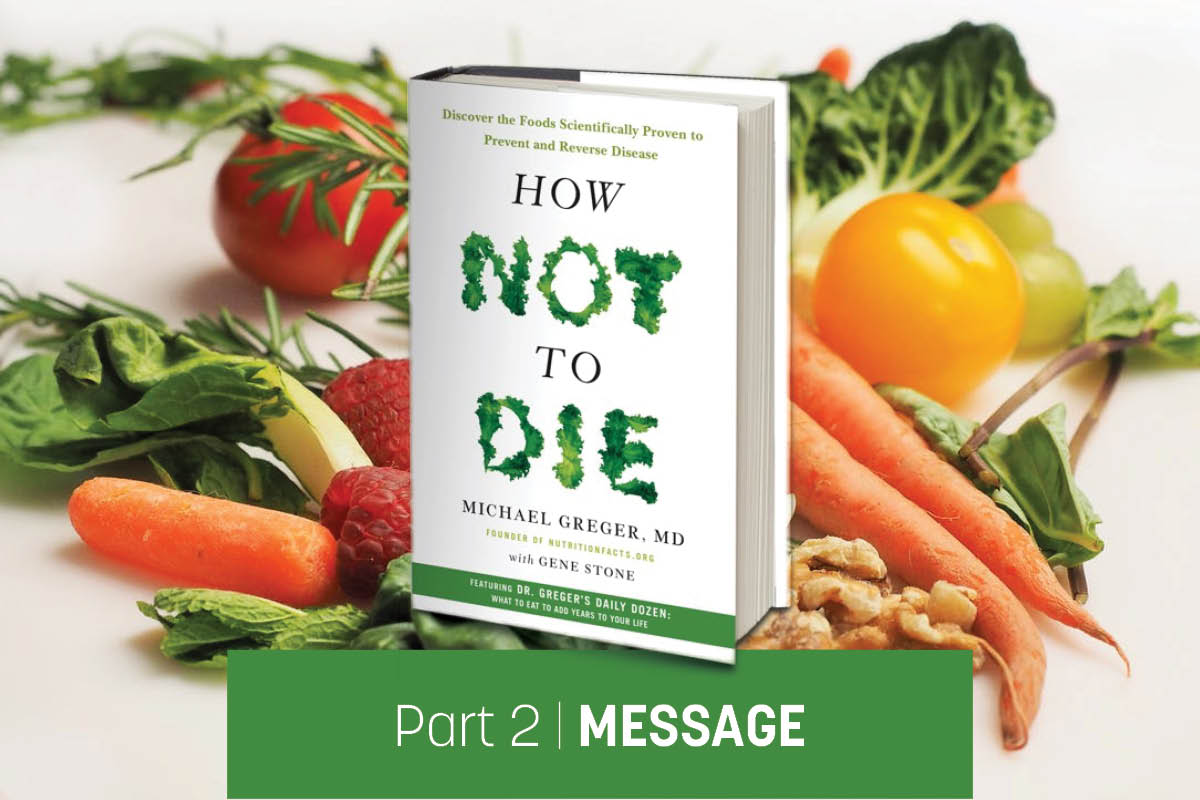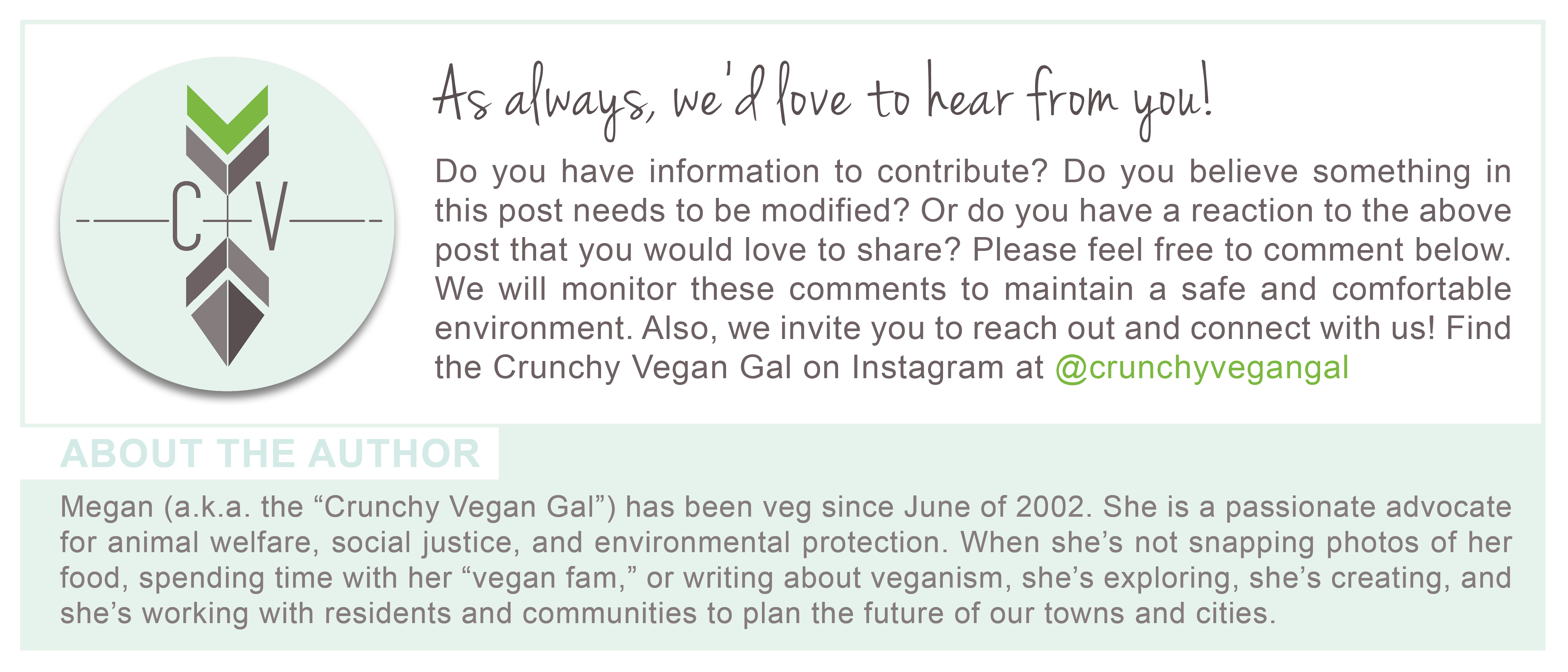This is Part 2 of a 5 part series summarizing the key points of the book How Not to Die and sharing my reactions as a proud junk food vegan and, thus, a suspicious reader from the start. Begin with Part 1 | Introduction >> Part 2 | Message >> Part 3 | Common Themes >> Part 4 | The Junk Food Perspective >> Part 5 | Final Takeaways

“Vegan” doesn’t necessarily mean “healthy.” In fact, I could spend the weekend eating nothing but plant-based donuts and pizza and still be vegan, but I’d be consuming limited nutrients. If you want to be healthy, you have to adhere to a healthful diet.
The Message
How Not to Die is a massive book. What all could it have to say? I must admit, a lot of the information—while expressed with simple language—took some time for me to digest as there was just so much content. I found myself re-reading chunks of chapters, and spreading my consumption of the book across an extended period of almost two months. In thinking about summarizing the book, I’m not even sure where to begin!?
As I said, however, the book is written simply so that anyone can understand. You don’t have to be a medical professional to learn these life-saving facts. Additionally, the format is logical and easy to follow. The first part of the book contains 15 chapters, all beginning with “How not to die from…” followed by one of the top 15 leading causes of death in the United States.
“Most deaths in the United States are preventable, and they’re related to what we eat.”
Dr. Michael Greger, How Not to Die

Diet is—by far—our greatest killer. Our society is plagued with high rates of chronic disease (from heart disease to diabetes, obesity, stroke, cancer, and so on). One thing that shocked me while reading this book was the vast number of people who die from unrelated causes, only for the autopsy to reveal they had been living with major diseases or cancers…unbeknownst to them! To think that I could be walking around right now with, say, breast cancer and not even know is horrifying!
But we need not suffer the way we do, suggests Dr. Greger. Instead, and as an alternative to drugs or invasive surgeries, there are ‘low-tech’ solutions: diet and lifestyle. In many of the cases presented by Dr. Greger, nutrition and wellness interventions (e.g., eating a plant-based diet, eliminating alcohol and processed foods, exercising, etc.) had equivalent and sometimes more effective health and recovery qualities, but without the negative side-effects of the drug counterparts (and with added health benefits instead).
Though you might think that something like this formula would become predictable after a while (“here’s a leading killer, but there is something you can do to protect yourself”—hmm, I wonder if it’s “eat more plants”?), the massive wealth of information was shocking and motivating, so it holds interest.
The second part of the book contained diet and lifestyle suggestions. Nutrition, the book emphasizes, is the simplest, most affordable change we can make in our lifestyle to improve the quality and longevity of our lives.
Primordial Preventive Medicine
Time and again, Dr. Greger elaborated on the ways in which the medical profession is possibly ill-prepared to provide adequate healthcare—from limited nutrition training to conflicts-of-interest (in Part III, I elaborate on some of these common themes). With these unfortunate realities of the medical profession, it’s hard to feel safe in a doctor’s care. What if we could avoid the doctor altogether?
Say you’re quite sick (goodness forbid). The normal reaction today is to treat the symptoms rather than the cause. A step better would be treating the disease…of course, this is only once you’ve been diagnosed.
As an alternative, Dr. Greger encourages “primordial preventive medicine,” which seeks to maintain good health and avoid the likelihood of getting sick in the first place.

What about people with a family history of poor health? Dr. Greger insists that ones’ family history need not be their destiny. Instead, you can “eat your way to a healthy heart.”
“Even if you’re born with high-risk genes, you have tremendous control over your medical destiny.”
Dr. Michael Greger, How Not to Die
“Given the right conditions,” suggests Dr. Greger, “the body can heal itself.” Good news, indeed. No matter what your parents cooked for dinner or how you lived as a child, by eating and living healthfully, you can slow the growth rate of cancers. By eating a plant-based diet, both cancer treatment and cancer prevention are the same thing.
The concept of primordial preventive medicine has been embraced by the American Heart Association, who came up with the “Simple 7.” In a survey of 14,000 people, “only about 1 out of 2,000 Americans had all seven factors intact. And the one they were missing the most? Diet.“
The book definitely makes eating a plant-based diet sound critical. While switching to plant-based eating can result in remarkably quick improvements, re-introducing meat and animal products back into one’s diet also re-introduces significant risk. So removing animal products should be a long-term strategy for health.
Conclusion
The books presents entirely too much information to even summarize each chapter here. But the organization makes it easy to refer to a chapter based on certain health challenges. Just know that 99.99% of the solutions presented were “eat more whole plant foods.” Simple as that! Of course, some are better than others, so it really is important to read and consider your own unique situation.
Check back tomorrow for a review of some common themes and some shocking information about the medical profession. For more resources, head to NutritionFacts.org. Be sure to watch the PBS special on Tuesday, August 8 at 8pm ET.
This 5-part series includes:




Trackbacks/Pingbacks